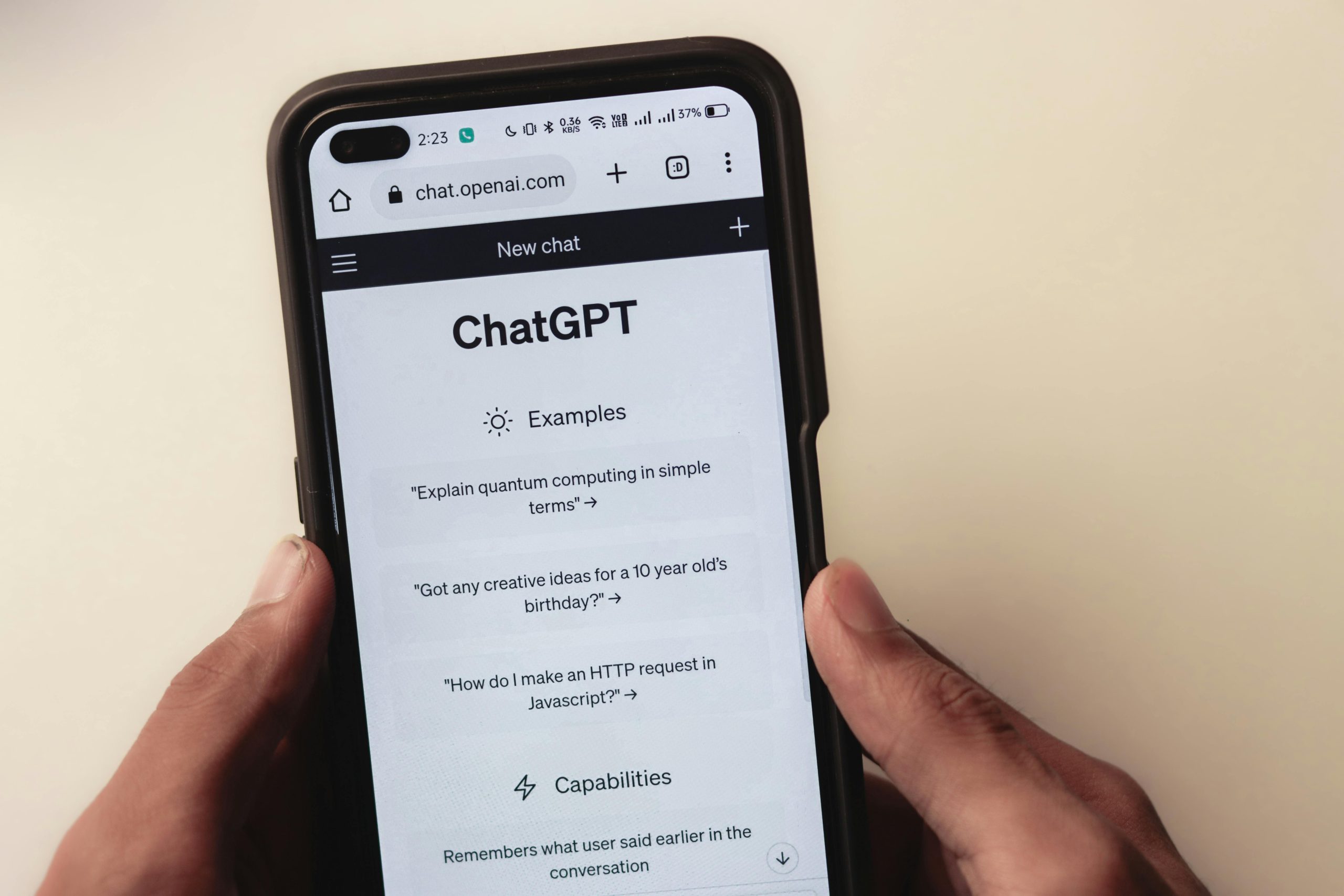ChatGPT’s New Browser Just Killed Your 40-Hour Work Week: The Agentic Web is Here

The release of OpenAI’s ChatGPT Atlas browser, unveiled in late October 2025, is not merely an incremental update to the digital experience; it represents a fundamental inflection point in how humans interface with the totality of the internet. By baking the power of an advanced AI agent directly into the browser—the most-used application in professional life—OpenAI has forcefully shifted the paradigm from *information retrieval* to *task execution*. This move immediately validates the most ambitious predictions regarding productivity gains, threatening the structure of the conventional forty-hour work week for knowledge workers across countless industries.
Atlas, which eliminates the traditional address bar in favor of an AI-centric interface, is forcing an industry-wide reckoning across usability, security, and professional value. For users and enterprises alike, the promise of automation is now inseparable from the perils of unprecedented vulnerability and the steep learning curve required to master this new class of digital collaborator.
The New Cognitive Load: Trust, Transparency, and User Adaptation
Mandatory Mental Model Overhaul for Users and Developers
The convenience of the Atlas browser comes with the steep requirement of users developing entirely new mental models for web interaction. The primary action is no longer “search and click” but “ask and delegate,” a subtle but profound shift in user behavior. Onboarding for these systems must actively teach users how to phrase delegation requests effectively and, critically, how to identify when an AI response is insufficient or incorrect. This represents a new layer of digital literacy that will be necessary for professional efficacy in the near future, moving interaction away from passive consumption toward active co-thinking with the system.
The shift is toward what researchers are calling cognitive synergy, moving beyond merely managing cognitive load by offloading tasks to the AI, rather than straining the user to navigate a complex interface. The core challenge is establishing trust. For the power user, this means mastering “Agent Mode,” which allows the AI to act autonomously across multiple tabs to complete multi-step workflows—a feature available to paid ChatGPT subscribers. For developers and UX professionals, the imperative is to design interfaces that provide transparency into the agent’s process, ensuring that the system’s automation does not create unexpected cognitive strain through unpredictable changes.
The Imperative of AI Reliability and Guardrails in Action
As users delegate more critical, consequential tasks, the inherent imperfections of large language models—hallucinations, sycophancy, and occasional factual errors—carry amplified risk. When the AI is merely suggesting a recipe, an error is a minor inconvenience; when it is summarizing legal documents or handling sensitive transaction details, an error can lead to significant financial or reputational damage. Consequently, the user experience design challenge pivots to building visible, intuitive guardrails that communicate the AI’s level of confidence and allow for immediate, easy intervention when the agentic action deviates from the user’s intent.
The reliability landscape as of late 2025 remains challenging. A recent August 2025 report revealed that the hallucination rate for top AI chatbots had climbed to 35%, nearly doubling from 18% the prior year. Specifically, ChatGPT was reported at a 40% hallucination rate in news-related prompts, though some domain-specific models like Gemini 2.5 Flash reported rates as low as 6.3% in March 2025. This forces the user to become an active auditor. For enterprises, where factual precision is paramount for operational safety, a confident error can be disastrous, as historical data shows that a small error rate can result in widespread decision-making mistakes if left unchecked. Consequently, the market trend is toward mandatory human-in-the-loop validation processes and advanced techniques like Retrieval-Augmented Generation (RAG) to couple models with trusted data sources.
Security and Governance: The Agentic Vulnerability Landscape
Exploitation Vectors: Prompt Injections and Data Leakage
The integration of an agent capable of reading and acting upon web content opens up novel security vulnerabilities that traditional browsers were not designed to mitigate. The most discussed threat vector is the prompt injection attack, where malicious actors embed invisible instructions within website code, intended to be sucked up by the AI agent and executed against the user’s security protocols or privacy settings. These attacks could lead to the exfiltration of highly sensitive data, from patient records to proprietary product designs, turning the convenience feature into a potent data theft mechanism.
Crucially, this threat is not theoretical; indirect prompt injection—where malicious text is hidden in content the AI is asked to process—has been demonstrated across agentic browsers, including initial exploits against competitors like Perplexity Comet. Security experts suggest that prompt injection, an “untrusted input attack against instructions,” may never be completely solved as long as models process external, attacker-controlled text. The risk is elevated because agentic actions are taken while the user is logged into sensitive sessions, effectively bypassing traditional security boundaries like the same-origin policy. To combat this, OpenAI’s Atlas includes a logged-out mode, which limits the agent’s access to personal data and accounts, serving as a critical, albeit limited, initial guardrail.
Data Sovereignty and Enterprise Adoption Hesitation
The speed of adoption among enterprise users is tempered by serious data governance concerns. While many IT departments are testing the waters, the risk of employees utilizing consumer agentic browsers on sensitive internal networks is a major point of organizational friction. The sheer volume of data the browser processes—browsing history, user preferences, and task data—raises immediate questions about data ownership and utilization, especially given the competitive revenue models being established by the developers.
The Browser Security Report 2025 highlighted that GenAI use via unmanaged, personal accounts has become the top channel for corporate-to-personal data movement, with up to 77% of employees pasting sensitive data into prompts. Enterprises are responding by aggressively redesigning data architectures and governance frameworks to support greater agent autonomy, focusing on disciplined strategy, observability, and ethical oversight to manage the influx of data processing. For many organizations, the productivity gains are currently being weighed against the exposure risk associated with feeding proprietary processes into a third-party AI ecosystem, leading many to explore dedicated, internally governed Enterprise AI Browsers instead of consumer tools.
The Socio-Economic Reckoning: Rethinking Professional Value
The Erosion of “Busy Work” and the Premium on Judgment
The initial headline’s implication is validated by the technology’s ability to eradicate vast swathes of what many workers considered their core, time-consuming duties—the digital equivalent of paperwork and administrative overhead. This doesn’t immediately eliminate jobs, but it radically redefines the value proposition of the human contributor. The premium shifts away from execution speed and toward strategic oversight, ethical judgment, domain expertise that still requires nuanced human reasoning, and the ability to prompt and manage the AI agents effectively. The worker of 2025 must transition from being the executor of tasks to being the architect and auditor of automated processes.
The economic data supports this disruption. As of early 2025, 25% of enterprises leveraging generative AI were already deploying agentic AI pilots, with adoption expected to reach 50% by 2027. Furthermore, research released in May 2025 suggested that HR leaders expect to redeploy nearly a quarter of their global workforce as agentic AI adoption skyrockets, creating a massive demand for reskilling initiatives.
Emergence of New Skillsets and the AI-Powered Micro-Entrepreneur
Conversely, this new technological substrate has unlocked unprecedented opportunities for lean, highly leveraged business creation. Individuals armed with these powerful, integrated tools are demonstrating the ability to generate significant passive income streams by leveraging AI to create content, manage client communications, and handle administrative back-end work with minimal personal input. This creates a bifurcation: established roles are being compressed, while entirely new, hyper-efficient micro-businesses are being born, built around the strategic application of agentic technology to niche problems, often reducing the required maintenance hours to fewer than five per week for a notable income return.
The new premium skillsets center on AI orchestration. Success in this market is less about knowing how to perform the task and more about knowing how to correctly decompose the problem for the agent and verify its solution. Soft skills like relationship building and collaboration with AI coworkers are becoming more critical as technical execution is offloaded.
The Competitive Horizon: Platform Wars and Ecosystem Strategy
The Escalation of Platform Integration by Competitors
The introduction of a dedicated, high-powered browser by OpenAI is forcing immediate and comprehensive responses from incumbent technology giants. Competitors are not merely updating their existing tools; they are fundamentally embedding their own foundational models directly into their core offerings. Microsoft’s Edge browser has aggressively deployed its Copilot features with agentic capabilities like multi-step web actions and sophisticated tab reasoning. Google has similarly integrated Gemini into its search framework, pushing AI-powered results to the forefront.
This intense platform-level integration signals that the battleground for digital dominance has shifted from operating systems and application suites to the very interface through which users access the internet’s totality. This race is evidenced by other players, including Perplexity’s Comet browser and The Browser Company’s Dia, establishing footholds in the AI-native browsing space.
Strategic Imperatives for Brand Survival in an AI-First Web
For content creators, marketers, and businesses, the mandate is clear: optimization for the pre-digested, AI-summarized internet is now paramount. Simply maintaining a strong presence on traditional search engine results pages is insufficient when the AI is the primary filter, especially since LLMs are being programmed to provide answers rather than decline when uncertain. This requires rigorously structuring product information, ensuring metadata is impeccable, and actively cultivating a distinct, un-distortable brand voice that the AI cannot accidentally rewrite or dilute when synthesizing information without full context. The future of brand visibility is inextricably linked to the quality and structure of data fed to the new intelligent layer, requiring proactive engagement rather than passive maintenance.
Navigating Forward: The Unwritten Rules of the Intelligent Web
Long-Term Vision: The Pursuit of True Artificial General Intelligence
While the Atlas browser is a significant commercial and productivity milestone, it also serves as a crucial, real-world deployment layer in the broader pursuit of Artificial General Intelligence (AGI), the stated foundational mission of the technology’s progenitor. By interacting with the chaotic, complex, and transactional environment of the live internet, the model gathers the unstructured, high-fidelity data necessary for advanced reasoning development—data acquisition that goes far beyond curated datasets. Thus, the browser functions less as an end-product revenue stream and more as an essential, real-time training module for the next evolutionary leap in AI capability.
Conclusion: Embracing the Shift from Work-Centricity to Oversight-Centricity
The narrative surrounding the new browser confirms that a significant inflection point has been reached in the digital age. The efficiency gains are demonstrably real, threatening the conventional structure of the five-day, forty-hour professional commitment for anyone whose work involves extensive digital synthesis and execution. The challenge for individuals is to adapt by mastering the tools of delegation, focusing on uniquely human contributions like creative strategy and ethical governance. For businesses, the immediate need is to secure their data integrity against new security threats like prompt injection while simultaneously re-architecting their digital presence to be native to this new, agent-driven web ecosystem. The era of simply using the internet is concluding; the age of directing the intelligent web has begun.










